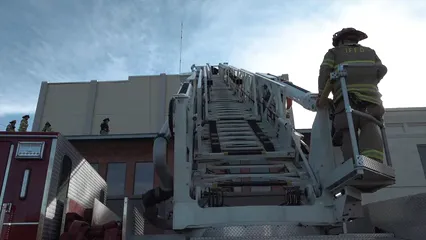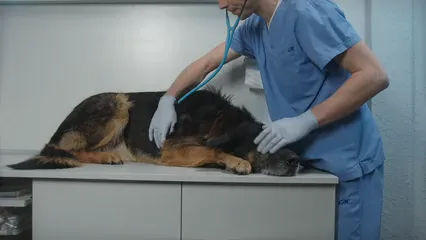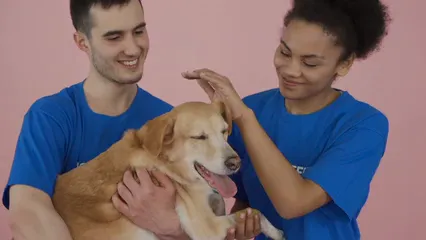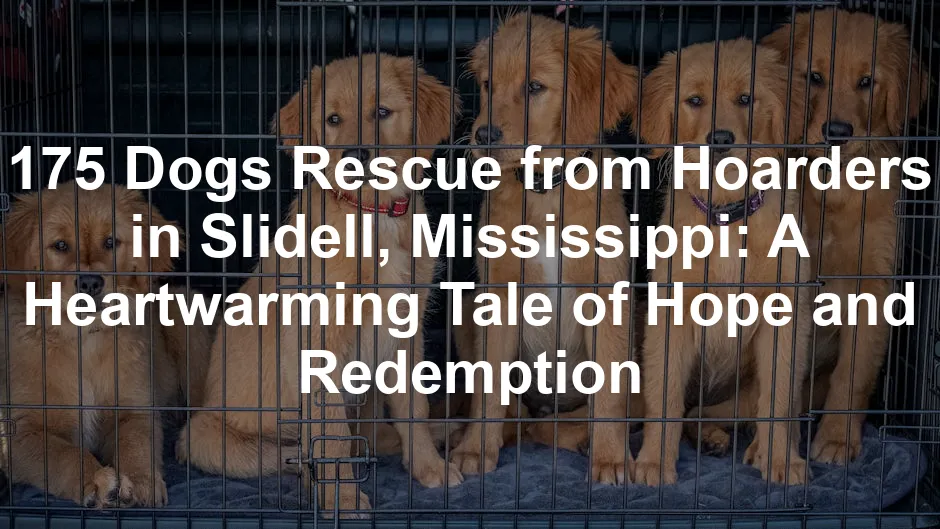Introduction
The tale of the 175 dogs rescued from hoarders in Slidell, Mississippi, in 2011, is a powerful reminder of resilience and compassion. It’s a story that tugs at the heartstrings while showcasing the remarkable bond between humans and animals. In a town where neglect seemed to rule, a beacon of hope arose as dedicated individuals joined forces to save these innocent lives. What happened in Slidell was nothing short of a miracle. Authorities discovered the situation after concerned citizens reported unusual sounds and smells emanating from a residence. What they found was shocking: a house filled with dogs living in deplorable conditions. The sight was heartbreaking. Dogs of all shapes and sizes were crammed into small spaces, many suffering from neglect and medical issues. But where there is despair, there is also determination. Local shelters, volunteers, and animal welfare organizations sprang into action. They knew they had to act quickly to save these furry souls. The rescue operation was a massive undertaking, involving countless hours of hard work and dedication. Volunteers worked tirelessly, coordinating medical care and transportation for the dogs. If you’re a dog owner, you know how important it is to have the right supplies for your furry friend. One essential item that can make life easier is Dog Training Pads. Perfect for house training or for those rainy days when your dog prefers to stay inside, these pads provide a reliable solution to help keep your home clean and odor-free. The transformation of these dogs was incredible. Many had never experienced the warmth of a loving home or the joy of playing in a yard. When they were finally rescued, the change was astonishing. From shaking in fear to wagging their tails with delight, these dogs began to learn what it meant to be loved. As they were rehabilitated, the stories began to emerge. Each dog had a unique tale of survival, filled with struggles and victories. They became symbols of hope, reminding us of the power of compassion. The journey didn’t end at rescue; it continued as these dogs found their forever homes. Families opened their hearts and doors, changing not just the lives of the dogs but their own as well. This article will walk you through the harrowing circumstances that led to the rescue, the unwavering commitment of volunteers, and the heartwarming transformations of these dogs as they embarked on their new lives. Prepare to be inspired by tales of survival, kindness, and the unbreakable bond between humans and their four-legged friends. The Slidell rescue is a testament to the incredible impact that love and determination can have, proving that every animal deserves a chance at a happy life.
The story of the 175 dogs serves as a reminder of the importance of animal rescue efforts. 175 dogs rescue from hoarders in slidell mississippi 2011 episode
The Background of Hoarding Situations
Understanding Animal Hoarding
Animal hoarding is a complex issue. It involves individuals who keep more animals than they can care for. This behavior often stems from underlying psychological conditions. Many hoarders believe they are rescuing animals, but ultimately, the situation spirals out of control. The animals suffer in overcrowded and unsanitary conditions, leading to neglect and health issues. In the United States, animal hoarding cases are alarmingly common. The ASPCA estimates that around 250,000 animals are victims of hoarding each year. This not only affects the animals but also the communities they inhabit. Hoarding can lead to public health risks, such as the spread of diseases. Moreover, it burdens local animal shelters and rescue organizations, which must manage the aftermath of these situations. The social stigma surrounding hoarding complicates matters. Many people don’t understand the mental health struggles involved. Instead of compassion, they often respond with judgment. This misunderstanding can hinder effective intervention and support for those in need of help.The Slidell Case: A Closer Look
The Slidell hoarding case in 2011 exemplified the severe impact of animal hoarding. Authorities received multiple reports from concerned neighbors about strange noises and overwhelming odors. Upon investigation, they discovered a house filled with 175 dogs living in appalling conditions. The sheer number of animals was shocking, but the state of the home was even more distressing. Legal and ethical considerations played a significant role in this case. Animal control officers had to navigate the balance between the rights of the hoarder and the welfare of the animals. While the hoarder believed they were doing the right thing, the reality painted a different picture. This situation raised questions about the responsibility of pet ownership and the need for increased awareness and intervention resources. Authorities faced challenges in determining the best course of action. Laws regarding animal welfare vary from state to state, complicating enforcement efforts. The Slidell case highlighted the need for clearer regulations and better educational resources. Understanding the signs of hoarding can empower communities to take action sooner rather than later.The Rescue Operation
Initial Response and Investigation
The rescue operation began with a tip from a concerned citizen. Neighbors had noticed the sounds of barking and a pervasive odor wafting from the residence. They reported their suspicions to local authorities, who launched an investigation. Upon arrival, animal control officers were greeted by an overwhelming sight: dozens of dogs crammed into small, filthy spaces, struggling for survival. Local law enforcement played a crucial role in assessing the situation. They worked alongside animal control to gather evidence and ensure the safety of both the animals and the rescuers. The initial assessment revealed a dire need for immediate intervention. The conditions were not only unhealthy for the dogs, but also posed risks to the surrounding community. As the investigation progressed, authorities made the difficult decision to initiate a large-scale rescue operation. News of the situation quickly spread throughout Slidell, attracting the attention of animal welfare organizations and volunteers eager to help. This collective effort showcased the community’s commitment to animal welfare and the importance of collaboration in crisis situations.The Rescue Efforts
The rescue team was composed of local shelters, animal control, and dedicated volunteers. Together, they coordinated a detailed plan to safely remove the dogs from the property. On the day of the rescue, the atmosphere was electric with anticipation and concern. Upon arrival at the hoarding site, the team faced numerous challenges. The sheer number of dogs was daunting, and many were scared and untrusting of humans. The rescuers quickly assessed the dogs’ conditions, prioritizing those in the most urgent need of medical attention. Each dog was carefully handled, ensuring their safety while minimizing stress. The process was not without its difficulties. The team encountered logistical issues, such as limited transportation and the need for immediate veterinary care. However, the unwavering spirit of the volunteers shone through. They rallied together, creating a makeshift command center to ensure that each dog received the attention they desperately needed. As the rescue progressed, the emotional weight of the situation became apparent. Each dog had its own story, often filled with trauma and neglect. The rescuers worked diligently to provide comfort, reassurance, and ultimately, a second chance at life. The day was challenging, but the team persevered, driven by the knowledge that they were making a difference in the lives of these animals.
Medical Care and Rehabilitation
The journey of recovery for the 175 rescued dogs from Slidell began with thorough medical assessments. Each dog was examined by skilled veterinarians who evaluated their health conditions. Many arrived with wounds, infections, and untreated illnesses. The dedicated veterinary teams provided immediate treatments, including vaccinations, spaying and neutering, and medications for various ailments. Importantly, these assessments were not just about physical health. Many dogs showed signs of emotional trauma. They trembled at the slightest noise and hid in corners, unsure of their new environment. Recognizing this, animal behaviorists worked closely with the dogs, helping them regain their confidence. Veterinary support was crucial. These professionals not only treated medical issues but also played a vital role in the emotional rehabilitation of the dogs. Their expertise ensured that each dog received holistic care, addressing both physical and psychological needs. The combination of medical treatment and emotional support laid the foundation for successful rehabilitation. The dogs began to learn how to trust again, transforming from fearful creatures into playful companions. These efforts highlighted the importance of a comprehensive approach to animal care, proving that love and expertise can heal even the most broken spirits.
The Impact on the Community
Community Involvement
The Slidell rescue operation sparked an incredible wave of community involvement. Local residents rallied together, donating supplies, funds, and their time to support the rescue efforts. Shelters received food, blankets, and toys, transforming the lives of the rescued dogs. It was heartwarming to see people from all walks of life come together for a common cause. Social media played a pivotal role in mobilizing resources. Posts about the rescue spread like wildfire, reaching thousands across platforms. People shared stories, organized fundraisers, and offered to volunteer. This online camaraderie created a sense of unity, making it clear that the community stood firmly behind the rescue mission. The outpouring of support did not just help the dogs; it fostered connections among community members. Neighbors who had never met came together, bonding over their shared love for animals. Many volunteers found a new purpose, dedicating their time to helping not just the rescued dogs but also advocating for animal welfare in their community. Speaking of community support, every pet owner should be prepared for emergencies. A well-stocked Pet First Aid Kit is essential to ensure quick treatment of injuries or health issues that might arise unexpectedly. It’s like insurance for your furry friend—better to have it and not need it than need it and not have it!
Long-term Effects on Animal Welfare
The Slidell rescue had lasting effects on animal welfare in the region. In the aftermath, local authorities and animal organizations began to push for policy changes aimed at preventing similar hoarding situations. Increased funding and resources were allocated to animal control agencies, ensuring they could respond swiftly to reports of abuse or neglect. Moreover, the rescue raised awareness about the issue of animal hoarding. Educational campaigns emerged, educating the public on how to recognize the signs of hoarding situations. Community workshops and seminars became commonplace, empowering residents to advocate for animal rights. The Slidell case also shifted attitudes toward rescue efforts. People started viewing animal rescue as a community responsibility rather than just the duty of shelters. The collaboration between local organizations and residents became a model for future rescue operations. This incident served as a wake-up call, reminding everyone that behind every statistic is a living being deserving of love and care. The community’s determination to address animal welfare issues created a ripple effect, inspiring others to take action and support rescue efforts.
Success Stories
Transformations of Rescued Dogs
Among the 175 dogs rescued, many stories of transformation emerged, showcasing the resilience of these animals. One such dog was Bella, a timid Shih Tzu mix. Initially, Bella cowered in fear, unsure of her new surroundings. With patience and care, she slowly began to trust her caregivers. Today, Bella is a cherished family member, showered with love and affection. Then there’s Max, a spirited Beagle who had never known the joy of a leash walk. After months of rehabilitation, Max now joyfully trots along with his new owner, exploring the world with a wagging tail. His transformation is a testament to the healing power of love and commitment. Testimonials from new owners reveal how these rescued dogs have enriched their lives. “Adopting Charlie changed everything for me,” said one owner. “He brings so much joy and laughter into my home.” If you’re looking for ways to keep your dog happy and healthy, consider investing in a Dog Grooming Kit. Regular grooming not only keeps your dog looking sharp but also helps to maintain their overall health by preventing matting and ensuring their skin is healthy.
The Role of Adoption Events
Adoption events are the lifeblood of animal rescue efforts. They create a vibrant atmosphere where potential adopters can meet dogs looking for loving homes. In Slidell, these events became crucial in finding forever families for the 175 rescued dogs. The community rallied together, transforming local parks and venues into bustling adoption fairs. These events do more than just facilitate adoptions; they promote awareness about the importance of rescue. They educate attendees on animal welfare issues, including the horrors of hoarding situations. Attendees leave not only with a new furry friend but also with knowledge about responsible pet ownership. Volunteers play a significant role in these adoption events. Many share their stories of advocating for animal rescue. One volunteer, Sarah, recalls her first adoption event. “I was nervous, but seeing those dogs light up when they met families was magical,” she shares. Volunteers like Sarah dedicate their time to fostering, transporting, and caring for the rescued animals. Their passion and commitment inspire others to get involved and make a difference.
FAQs
What should I do if I suspect animal hoarding in my community?
If you suspect animal hoarding in your community, it’s crucial to act quickly and responsibly. Start by observing the situation closely. Take notes on specific behaviors and conditions you witness. Signs of hoarding can include a large number of animals living in unsanitary conditions, lack of veterinary care, or the owner showing signs of distress or denial about the situation. Once you’ve gathered information, contact local authorities. Most communities have animal control or humane societies that can assess the situation. It’s important to provide them with as much detail as possible. This includes the address, number of animals observed, and any other relevant information. Remember that addressing suspected hoarding is sensitive. Avoid confronting the individual directly, as this can escalate tensions. Instead, let the authorities handle the situation professionally. Raising awareness is also vital. Share information with friends and family about recognizing signs of hoarding and the importance of reporting it. The more educated our communities are, the better equipped we are to intervene when necessary. By taking these steps, you contribute to the welfare of animals in your area. Your vigilance can help ensure that those in need receive the care and compassion they deserve.
How can I help rescue organizations in my area?
Want to make a difference? You can! Rescue organizations always need a helping hand. Here’s how you can jump in and lend support: 1. **Volunteer Your Time**: Shelters often seek volunteers for various tasks. Whether it’s walking dogs, cleaning kennels, or assisting at events, every bit helps. Your presence can bring joy to the animals and lighten the staff’s load. 2. **Foster Animals**: If you have room in your heart and home, consider fostering. This means providing temporary care for animals in need. Fostering helps free up space in shelters and gives animals a chance to thrive outside of stressful environments. 3. **Donate Supplies**: Shelters go through supplies quickly. Donations like food, blankets, toys, and grooming tools make a huge difference. Check with local organizations to see what specific items they need. 4. **Financial Contributions**: Not everyone can volunteer physically, but donations, big or small, matter. They fund medical care, food, and shelter operations. Even a small amount can help cover basic needs. 5. **Spread the Word**: Share information about local rescue organizations on social media. Awareness can lead to more volunteers, donations, and adoptions. Your voice can help find homes for animals in need. By taking any of these actions, you contribute to a greater cause. Every effort counts in the fight against animal neglect and abuse.
What are the signs of animal hoarding?
Recognizing animal hoarding is crucial for early intervention. Here are some common signs to watch for: 1. **Overwhelming Odor**: A strong smell of urine or feces can indicate a hoarding situation. 2. **Excessive Number of Animals**: If someone has more pets than they can care for, it could be a red flag. 3. **Neglected Animals**: Animals that appear dirty, malnourished, or in poor health may signal hoarding. 4. **Unsanitary Living Conditions**: Homes filled with clutter, waste, or filth are common in hoarding situations. 5. **Isolation**: Hoarders often isolate themselves. They may avoid visitors, keeping their situation hidden. 6. **Denial**: Individuals may refuse to acknowledge the severity of the problem or the animals’ needs. If you notice these signs, it’s essential to report them to local authorities. Early intervention can save lives.
Can hoarded animals be rehabilitated?
Yes, many hoarded animals can be rehabilitated, though it’s a challenging process. Here’s what it typically involves: 1. **Medical Attention**: Most rescued animals require immediate veterinary care. This includes vaccinations, spaying/neutering, and treatment for any health issues. 2. **Behavioral Rehabilitation**: Many hoarded animals struggle with anxiety or fear. Professional trainers and behaviorists can help them adjust to a more typical environment. 3. **Socialization**: Gradually introducing animals to human interaction is vital. This process helps them learn trust and develop positive behaviors. 4. **Patience and Time**: Rehabilitation takes time. Each animal is unique, and their recovery journey varies. Some may take longer to adjust than others. 5. **Success Rates**: While not all animals fully recover, many thrive in loving homes. Success stories often emerge, showcasing remarkable transformations. With the right care, commitment, and love, many hoarded animals can find joy and companionship in their new lives.
How can communities prevent animal hoarding situations?
Preventing animal hoarding requires community effort and awareness. Here are effective strategies: 1. **Education**: Increase awareness about responsible pet ownership. Workshops or seminars can provide valuable information on proper care and the signs of hoarding. 2. **Support Resources**: Offer resources for those struggling to care for their pets. This can include low-cost veterinary services, food banks for pets, and behavioral support. 3. **Encourage Spaying and Neutering**: Promote initiatives to spay and neuter pets. This reduces the number of unwanted animals and helps maintain manageable pet populations. 4. **Community Engagement**: Foster connections among residents. Create neighborhood watch programs focused on animal welfare. Engaged communities are more likely to report suspicious situations. 5. **Report Concerns**: Encourage residents to speak up if they suspect hoarding. Quick reporting can lead to timely interventions, saving animals from neglect. By working together, communities can create a supportive environment that prevents animal hoarding. Awareness is the first step towards change.
All images from Pexels





